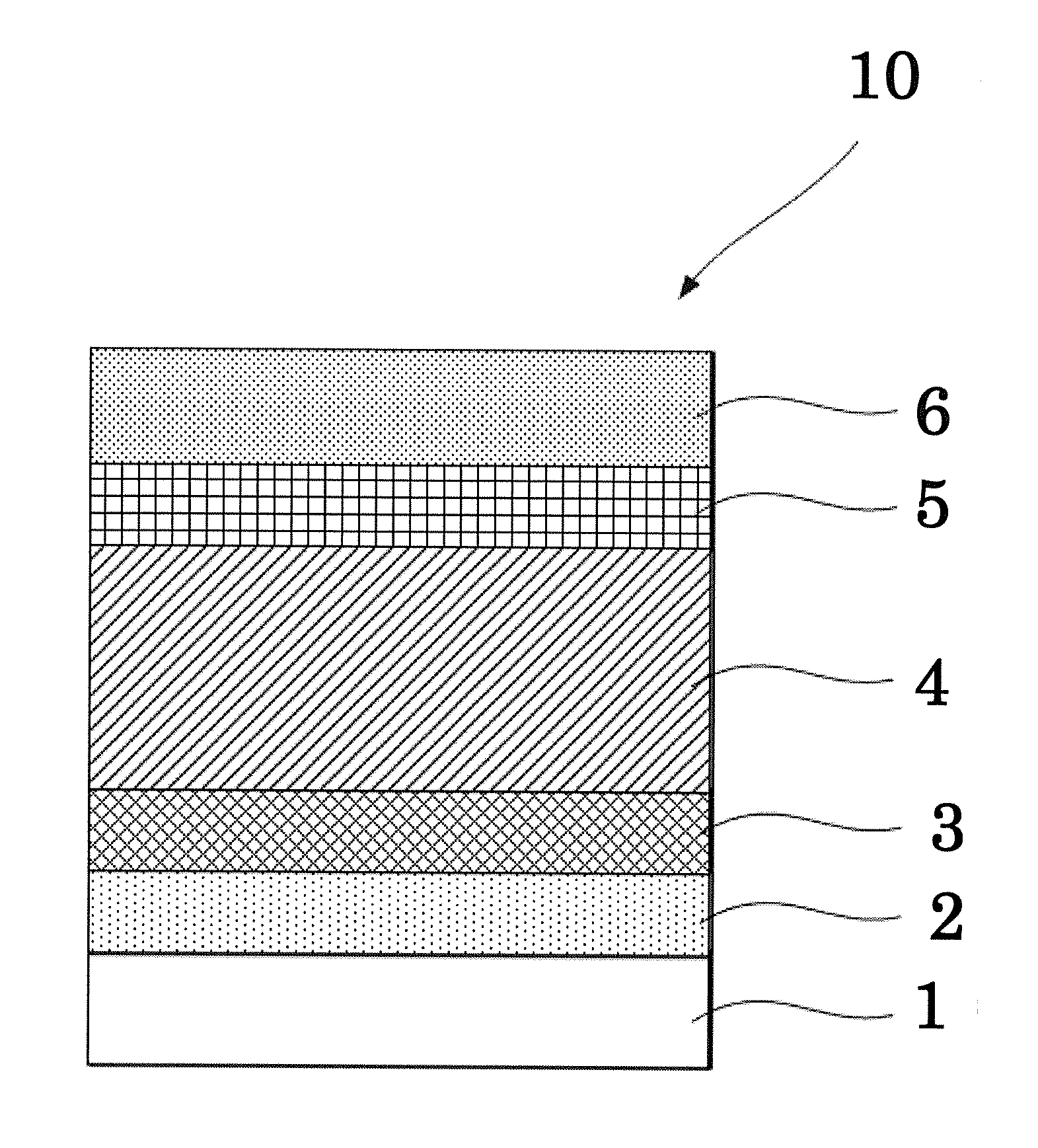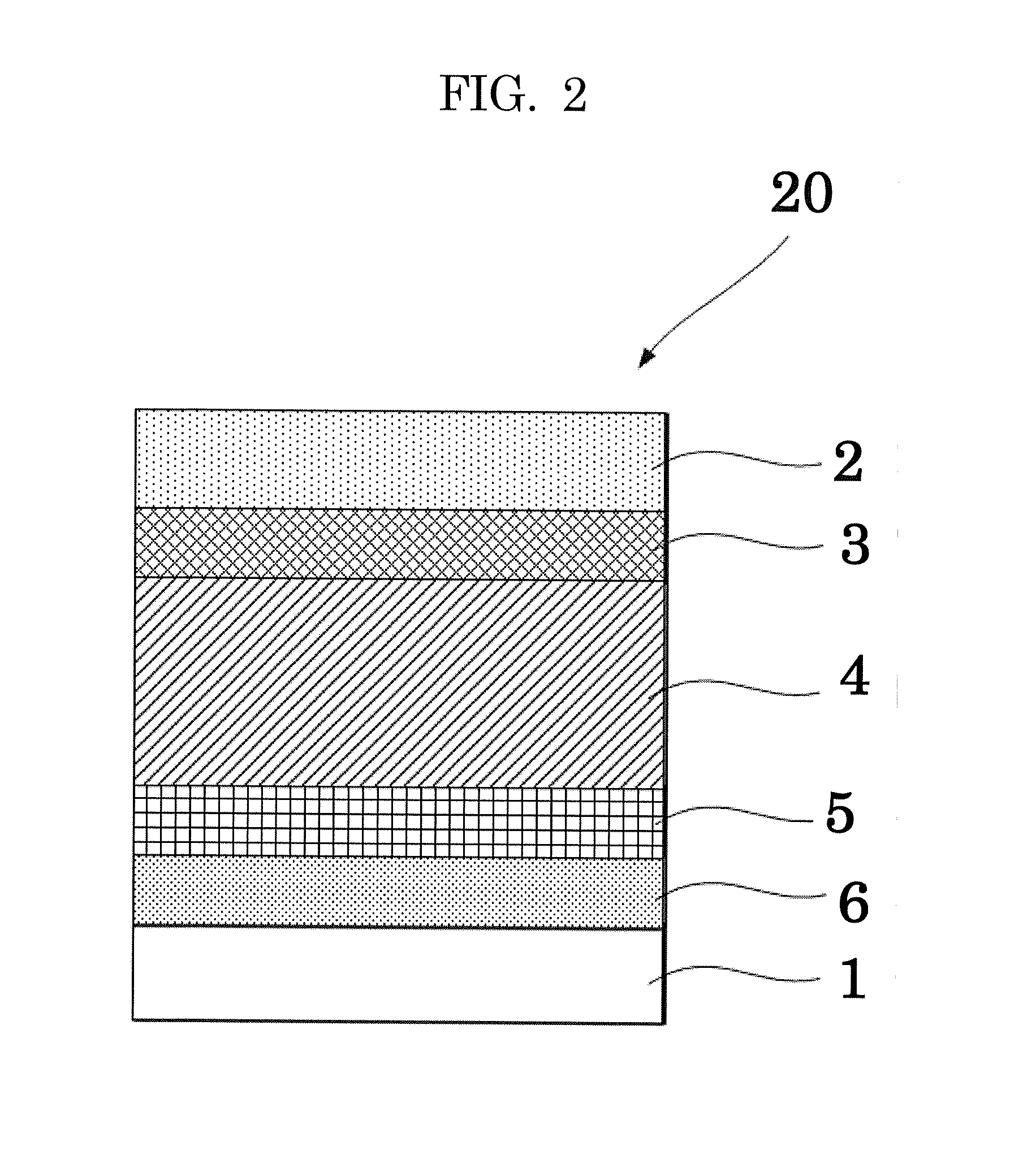Organic material and photoelectric conversion element
a photoelectric conversion element and organic material technology, applied in the direction of non-metal conductors, conductors, organic chemistry, etc., can solve the problems of difficult to obtain high open circuit voltage, high cost of silicon solar cells typified by silicon solar cells, and inferior diffusion length of separated electric charges
- Summary
- Abstract
- Description
- Claims
- Application Information
AI Technical Summary
Benefits of technology
Problems solved by technology
Method used
Image
Examples
synthesis example 1
[0089]In accordance with the following scheme, 2DPP-TBDT, which is the Exemplary Compound 2, was synthesized. Note that, compound 7 described in the scheme was synthesized based on Angewandte Chemie, International Edition (2011), 50, (41), 9697-9702.
[0090]Compound 1 (10.0 g, 33.3 mmol), 2-ethylhexyl bromide (19.3 g, 99.9 mmol), and K2CO3 (18.4 g, 133 mmol) were mixed in a dry DMF (300 mL), and were stirred at 120° C. for 24 hours. After cooling to room temperature, the reaction mixture was poured into a large amount of ice water in order to form precipitates. The obtained precipitates were collected through a filtration, and were washed with water and methanol.
[0091]The obtained product was purified by silica gel column chromatography (eluent: CHCl3 / hexane=1:1, v / v), was recrystallized with CHCl3 / methanol, and was dried under vacuum, to thereby obtain compound 2 as a reddish brown solid (8.89 g, yield=51%).
[0092]The results of 1H NMR and 13C NMR for the obtained compound 2 are shown...
example 1
[0134]A solution of PEDOT:PSS was coated on a glass substrate with a patterned ITO that had been subjected to ultrasonic washing and UV ozone cleaning in the same manner as in Comparative Example 1.
[0135]Next, an organic material shown in the Exemplary Compound 2 and PC71BM (phenyl C71 butyric acid methyl ester, product of Frontier Carbon Corporation) were dissolved in chloroform (1 mL) at a ratio of 7 mg:7 mg. The resultant mixture was stirred overnight or longer in a glove box that had been purged with nitrogen, to thereby prepare a solution for forming a photoelectric conversion layer.
[0136]Then, the obtained solution for forming a photoelectric conversion layer was coated on the PEDOT:PSS film in the atmosphere by a spin coating method, to thereby form a film thereon. Then, the film was dried at 120° C. for 10 minutes, to thereby form a photoelectric conversion layer. The obtained photoelectric conversion layer was found to have an average thickness of 110 nm.
[0137]Next, using a...
example 2
Preparation of Photoelectric Conversion Element
[0139]A photoelectric conversion element was prepared in the same manner as in Example 1 except that diiodooctane was added to the solution for forming a photoelectric conversion layer so that a concentration thereof was 1% by mass.
[0140]Note that, an addition of a small amount of diiodooctane to the solution for forming a photoelectric conversion layer prevents an excessive aggregation, and can form an appropriate aggregated structure for charge separation and charge transportation.
[0141]Solar cell performances of the prepared photoelectric conversion element were measured upon irradiation of simulated solar light (AM1.5, 100 mW / cm2) in the same manner as in Comparative Example 1. The obtained photoelectric conversion element was found to have an open end voltage of 720 mV, a short-circuit current density of 13.99 mA / cm2, a fill factor of 0.53, and a photoelectric conversion efficiency of 5.38%, which showed good photoelectric conversi...
PUM
| Property | Measurement | Unit |
|---|---|---|
| concentration | aaaaa | aaaaa |
| temperature | aaaaa | aaaaa |
| temperature | aaaaa | aaaaa |
Abstract
Description
Claims
Application Information
 Login to View More
Login to View More - R&D
- Intellectual Property
- Life Sciences
- Materials
- Tech Scout
- Unparalleled Data Quality
- Higher Quality Content
- 60% Fewer Hallucinations
Browse by: Latest US Patents, China's latest patents, Technical Efficacy Thesaurus, Application Domain, Technology Topic, Popular Technical Reports.
© 2025 PatSnap. All rights reserved.Legal|Privacy policy|Modern Slavery Act Transparency Statement|Sitemap|About US| Contact US: help@patsnap.com



